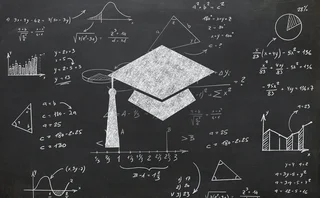
Quant Guide 2020: Sorbonne University/Ecole Polytechnique
Paris, France

The Master’s in Probability and Finance is jointly conducted by two French institutions: Ecole Polytechnique, an engineering college and grande école in the Parisian suburb of Palaiseau; and Sorbonne University, a Paris-based school established in 2018 via the merging of Paris-Sorbonne University and Pierre & Marie Curie University. The latter institution previously hosted the programme.
Appropriately for a collaborative degree, it is jointly led by three academic directors: Mathieu Rosenbaum, chair of analytics and models for regulation at Ecole Polytechnique; Emmanuel Gobet, professor of applied mathematics at the same; and Gilles Pagès, professor in the field of probability and random models group at Sorbonne University. The mathematician Nicole El Karoui, one of the leading experts on credit risk and credit derivatives pricing, is also an instructor on the master’s: she teaches a joint class, alongside Gobet, in stochastic processes and derivatives.
The one-year programme is an M2 degree – that is, a master’s designed for students who already hold a master’s. It is structured across two semesters, with an internship that begins in April. Last year’s cohort is above the average size for the quant guide population as a whole, with 75 students. The number of teaching staff is also fairly high, however – there are 34 instructors on the programme, 10 of whom have an industry affiliation.
The programme is popular among offer holders: of the 83 applicants that received offers for the latest course, 75 accepted – a yield of 90%. Successful candidates join the programme in September, unless they elect to complete a series of complementary courses beginning in the May of a given year. These refreshers include classes in statistics, probability, C++, and numerical methods.
Once the programme begins, students tackle coursework in optimisation and stochastic control; machine learning, neural networks and deep learning; Monte Carlo algorithms for Markov chains and particle methods; and parallel programming on GPU devices for big data.
Only users who have a paid subscription or are part of a corporate subscription are able to print or copy content.
To access these options, along with all other subscription benefits, please contact info@risk.net or view our subscription options here: http://subscriptions.risk.net/subscribe
You are currently unable to print this content. Please contact info@risk.net to find out more.
You are currently unable to copy this content. Please contact info@risk.net to find out more.
Copyright Infopro Digital Limited. All rights reserved.
As outlined in our terms and conditions, https://www.infopro-digital.com/terms-and-conditions/subscriptions/ (point 2.4), printing is limited to a single copy.
If you would like to purchase additional rights please email info@risk.net
Copyright Infopro Digital Limited. All rights reserved.
You may share this content using our article tools. As outlined in our terms and conditions, https://www.infopro-digital.com/terms-and-conditions/subscriptions/ (clause 2.4), an Authorised User may only make one copy of the materials for their own personal use. You must also comply with the restrictions in clause 2.5.
If you would like to purchase additional rights please email info@risk.net
More on Quantitative finance
Baruch, Princeton cement duopoly in 2026 Quant Master’s Guide
Columbia jumps to third place, ETH-UZH tops European rivals
Quant Finance Master’s Guide 2025
Risk.net’s guide to the world’s leading quant master’s programmes, with the top 25 schools ranked
Baruch maintains top spot in 2025 Quant Master’s Guide
Sorbonne reclaims top spot among European schools, even as US salaries decouple
Quant Finance Master’s Guide 2023
Risk.net’s guide to the world’s leading quant master’s programmes, with the top 25 schools ranked
Baruch topples Princeton in Risk.net’s quant master’s rankings
US schools cement top five dominance as graduate salaries soar
Is it worth doing a quant master’s degree?
UBS’s Gordon Lee – veteran quant and grad student supervisor – asks the hard question
Starting salaries jump for top quant grads
Quant Guide 2022: Goldman’s move to pay postgrads more is pushing up incomes, says programme director
Quant Finance Master’s Guide 2022
Risk.net’s guide to the world’s leading quant master’s programmes, with the top 25 schools ranked







